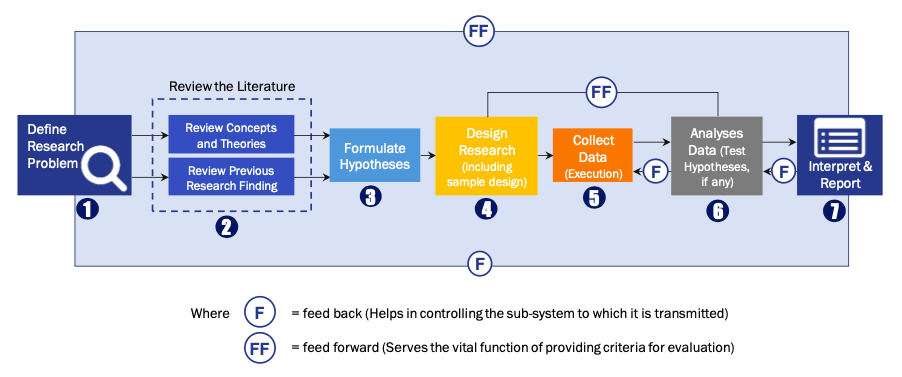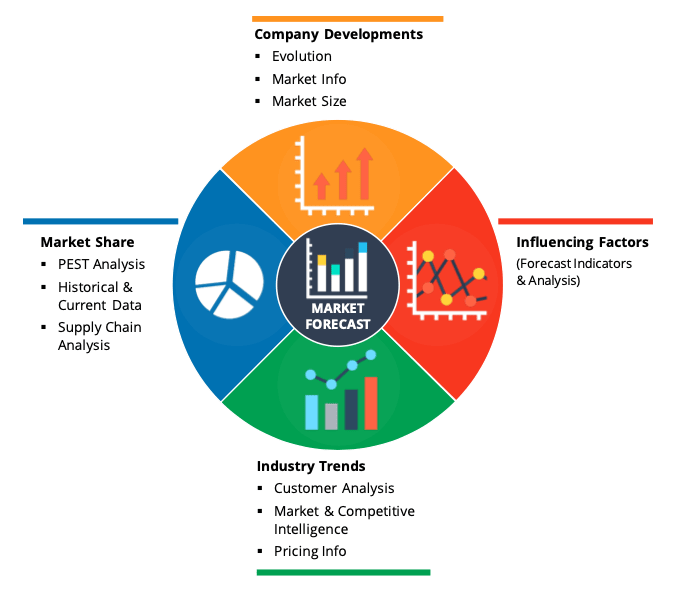The Global Nanotechnology Market is currently valued at USD 92.5 billion in 2022, registering a CAGR of 19.5% over the forecast period, 2022-2030.
Nanotechnology refers to the branch of science and engineering devoted to designing, producing, and using structures, devices, and systems by manipulating atoms and molecules at the nanoscale, i.e. having one or more dimensions of the order of 100 nanometres (100 millionths of a millimeter) or less.
The nanotechnology market has gained rapid traction due to its increasing use in designing complicated structures from the molecular or atomic stage to develop high-quality and high-performance products at lower costs. It is a revolutionary and highly useful technology that is used in all industrial verticals such as pharmaceuticals, transportation, agriculture, communication, manufacturing, and other industries.
Nanotechnology facilitates improvements in technologies such as additive manufacturing, quantum computing, and precision biotechnology. The top nanotechnology trends range from advanced carbon and composite-based nanomaterials to nanoencapsulation. Thus, due to such developments, the market is growing.
Segmentation -
The nanotechnology market is segmented
By Products
By Applications
Geography
The report offers market size and forecasts in value (in USD million) for all the above-mentioned segments.
Driver & Restraints
Increasing Demand for Titanium Nanoparticles -
Titanium dioxide nanomaterials are the most widely used white pigment materials in the paints and coatings industry, owing to their UV absorption and photocatalytic sterilizing properties. They are majorly used in the coatings industry because they efficiently scatter visible light, and thereby, impart whiteness, brightness, and opacity when incorporated into coatings. Titanium dioxide nanomaterial products are sometimes coated with silica and alumina and doped with another metal for specific applications in the coatings industry. An article published by the journal Nanoparticles in February 2023, reported the broad applications of titania in technology and medicine, from dye-sensitized solar cells, photodynamic therapy, to water remediation. Moreover, these nanoparticles reveal excellent photochemical properties and high biocompatibility. Also, the TiO2 particles are quite cheap and accessible components. Thus, such instances are contributing to the growth of the studied market.
The aerospace industry requires components made of materials capable of meeting requirements such as lightness, excellent thermal resistance, high durability, and capable of resisting electromagnetic interference (EMI). Few materials manage to meet all these characteristics. The addition of filler into the polymer matrix confers the great majority of properties that nanocomposites show or improve the inherent properties of the matrix. For this reason, a good dispersion of nanoparticles into the polymer matrix is necessary to obtain adequate results and avoid local stress concentrations, i.e., agglomeration, which eventually results in product failure. Homogeneous dispersion is vital for the optimum performance of a nanocomposite.
An article, titled, “Recent Advances in Nanomaterials-Based Targeted Drug Delivery for Preclinical Cancer Diagnosis and Therapeutics” published in the journal June 2023, reported that a wide range of nanocarriers, such as dendrimers, micelles, PEGylated liposomes, and polymeric nanoparticles are used to facilitate the efficient transport of anti-cancer drugs at the target tumor site. Also, real-time labeling and monitoring of cancer cells using quantum dots is essential for determining the level of therapy needed for treatment. The drug is targeted to the tumor site either by passive or active means. Thus, such instances are driving the growth of the studied market over the forecast period.
Restraints
High Cost of Technology
Recent research published by American scientists in 2021, reported that one milligram of gold nanoparticles costs about USD 80, and for a gram of gold nanoparticles, it is around USD 80,000. Nanotechnology is an expensive area of research and only developed nations have the resources to invest in it. Thus, the high cost may slow down the growth of the studied market. COVID-19 and Russian War Impact on Nanotechnology Market
For instance, an article titled, “Nanotechnology for the Management of COVID-19 during the Pandemic and in the post-pandemic Era” published in June 2022, reported that during the initial time of the COVID-19 pandemic, the ongoing studies related to nanotechnology were suspended and the studied market’s growth was impacted initially. However, post-pandemic it was observed that nanotechnology is likely to contribute to the management of COVID-19-related issues, including the multiple health problems of long-term COVID’ that develop more than three months after the acute infection Also the application of nanotechnology is important in terms of global preparation for future viral pandemics. Also, the current research is establishing the role of nanotechnology is also applied to the detection of SARS-CoV-2, vaccine development, and the development of antiviral medicines. Thus, such instances are contributing to the growth of the studied market.
Segmentation Analysis:
Nanomaterials can be defined as materials possessing, at minimum, one external dimension measuring 1-100nm. The definition given by the European Commission states that the particle size of at least half of the particles in the number size distribution must measure 100nm or below. Furthermore, recent studies and research are expected to contribute to the growth of the studied segment. For instance, in September 2022, in a recent study, researchers from Xi’an Jiaotong-Liverpool University and other universities in China reported that brain stimulation combined with a nose spray containing nanoparticles can improve recovery after ischemic stroke in an animal model. The nasal spray is a non-invasive method for delivering magnetic nanoparticles into the brain that the study finds can increase the benefits of transcranial magnetic stimulation (TMS). Thus, such studies are leading to better treatment thereby contributing to the growth of this segment.
Aerospace nanotechnology comprises three types of nanomaterial, namely, polymer nanocomposites, anti-corrosion coatings, and nanostructured metals. Nanostructured materials are also used in the development of traditional energetic materials used in ammunition. The development of carbon nanotube composites in the manufacturing of airframes is expected to be one of the major driving factors impacting the growth of nanotechnology in aerospace over the forecast period.
North America accounted for a significant market share of over 35% in 2021 and dominated the global nanotechnology market. The region is home to the world's largest population and there is a huge demand for various electronics, medical equipment, textiles, and automotive products that have led to a higher demand for nanomaterials in the manufacturing of these products. Furthermore, technological developments are fueling the growth of the studied market. For instance, in June 2021, Danaher completed the acquisition of Precision NanoSystems. Precision NanoSystems was engaged in manufacturing technological solutions for genetic drugs.
Competitive Landscape
The Global Nanotechnology Market is highly fragmented due to the presence of many market players working globally and regionally. Some of the key market players working in this domain are:
Recent Development
Q1. What is the market size of the Nanotechnology Market ?
Nanotechnology Market registering a CAGR of 19.5% over the forecast period, 2022-2030.
Q2. What are the latest Trends in the Nanotechnology Market ?
Nanotechnology facilitates improvements in technologies such as additive manufacturing, quantum computing, and precision biotechnology.
Q3. Which are the major companies in the Nanotechnology Market ?
Showa Denko, KK, BASF SE, Pen Inc, Nanosys Inc. and QD Vision are some of the major companies
Q4. What segments are covered in the Nanotechnology Market Report?
The segements covered in the Nanotechnology Market Report are By Product, By Application and Geography.
Data Library Research are conducted by industry experts who offer insight on industry structure, market segmentations technology assessment and competitive landscape (CL), and penetration, as well as on emerging trends. Their analysis is based on primary interviews (~ 80%) and secondary research (~ 20%) as well as years of professional expertise in their respective industries. Adding to this, by analysing historical trends and current market positions, our analysts predict where the market will be headed for the next five years. Furthermore, the varying trends of segment & categories geographically presented are also studied and the estimated based on the primary & secondary research.
In this particular report from the supply side Data Library Research has conducted primary surveys (interviews) with the key level executives (VP, CEO’s, Marketing Director, Business Development Manager and SOFT) of the companies that active & prominent as well as the midsized organization
FIGURE 1: DLR RESEARH PROCESS

Extensive primary research was conducted to gain a deeper insight of the market and industry performance. The analysis is based on both primary and secondary research as well as years of professional expertise in the respective industries.
In addition to analysing current and historical trends, our analysts predict where the market is headed over the next five years.
It varies by segment for these categories geographically presented in the list of market tables. Speaking about this particular report we have conducted primary surveys (interviews) with the key level executives (VP, CEO’s, Marketing Director, Business Development Manager and many more) of the major players active in the market.
Secondary ResearchSecondary research was mainly used to collect and identify information useful for the extensive, technical, market-oriented, and Friend’s study of the Global Extra Neutral Alcohol. It was also used to obtain key information about major players, market classification and segmentation according to the industry trends, geographical markets, and developments related to the market and technology perspectives. For this study, analysts have gathered information from various credible sources, such as annual reports, sec filings, journals, white papers, SOFT presentations, and company web sites.
Market Size EstimationBoth, top-down and bottom-up approaches were used to estimate and validate the size of the Global market and to estimate the size of various other dependent submarkets in the overall Extra Neutral Alcohol. The key players in the market were identified through secondary research and their market contributions in the respective geographies were determined through primary and secondary research.
Forecast Model
